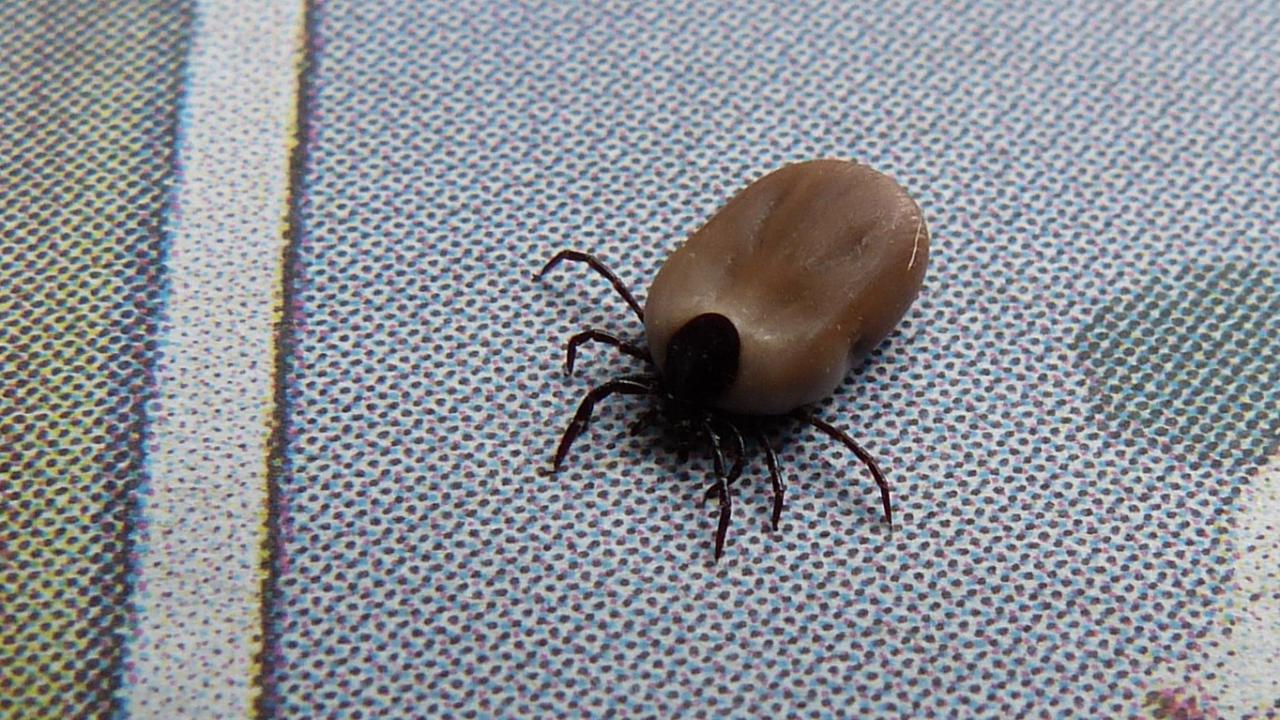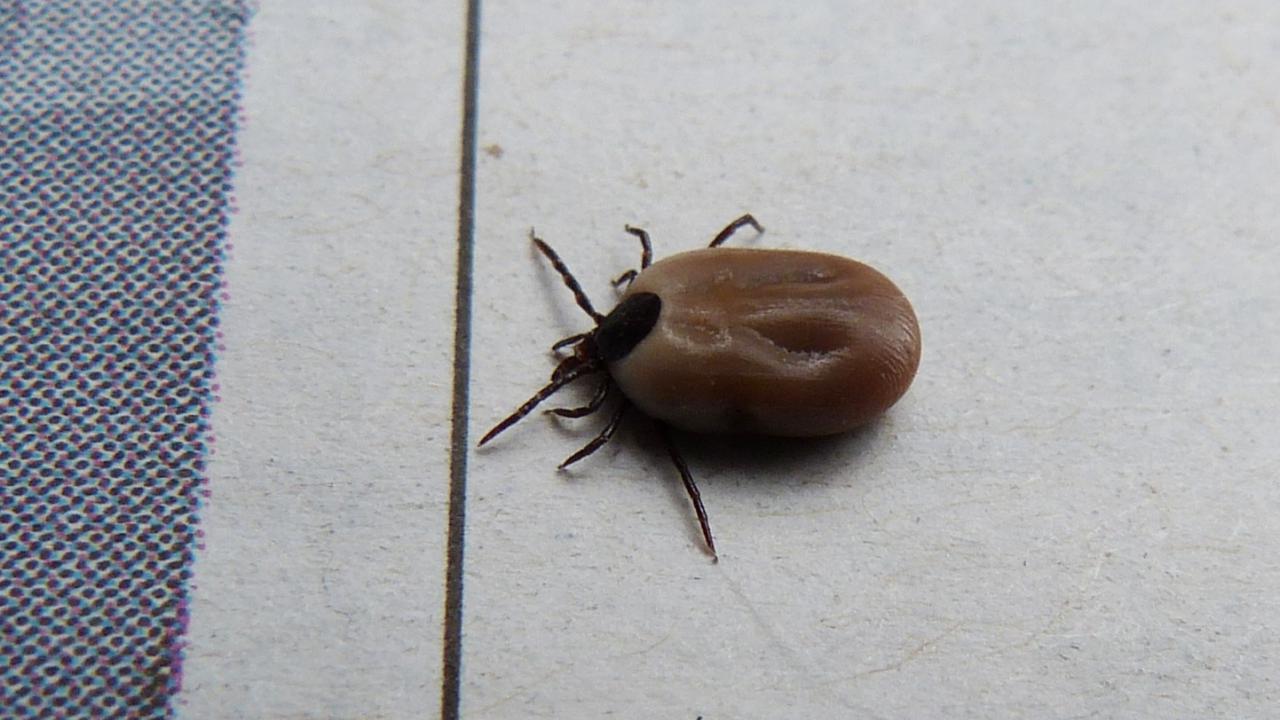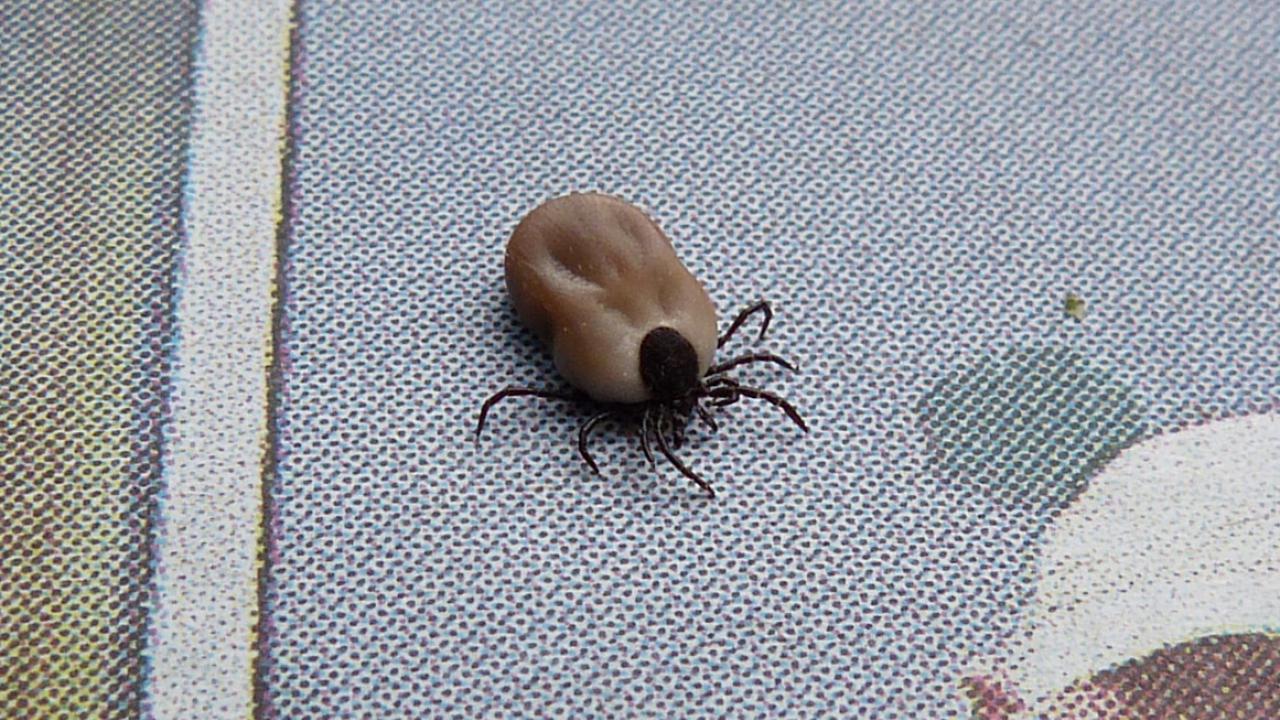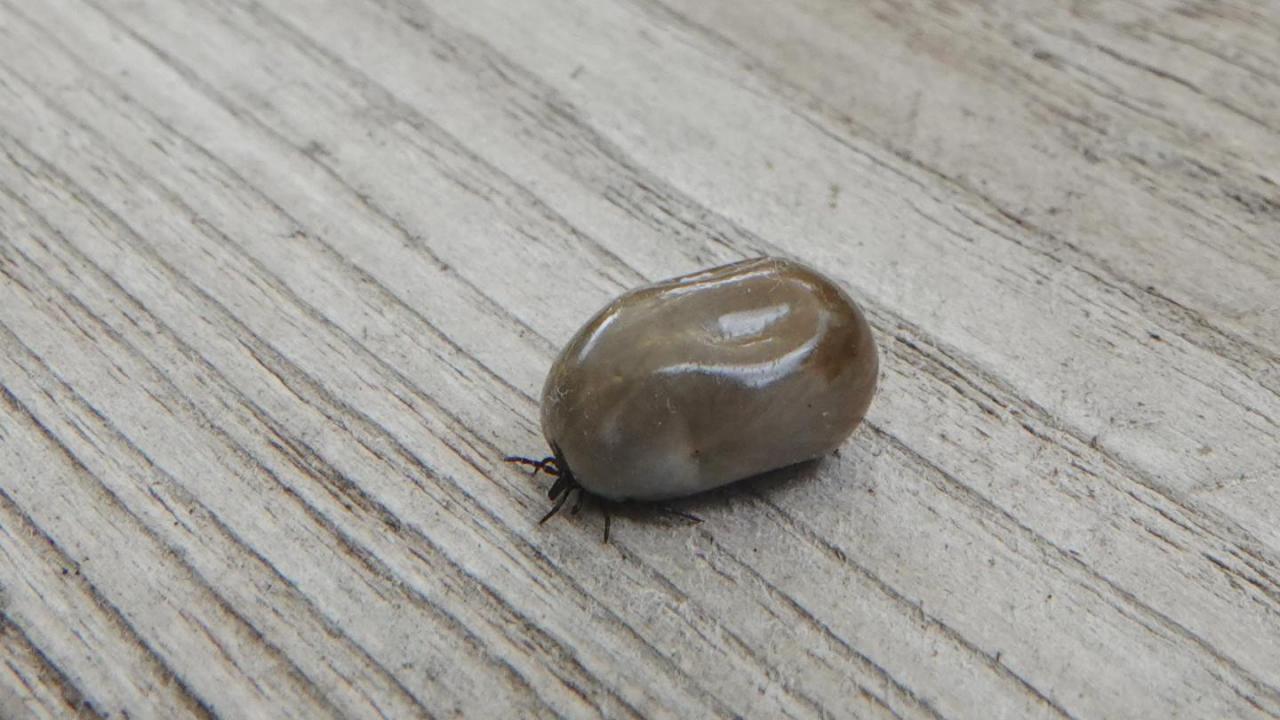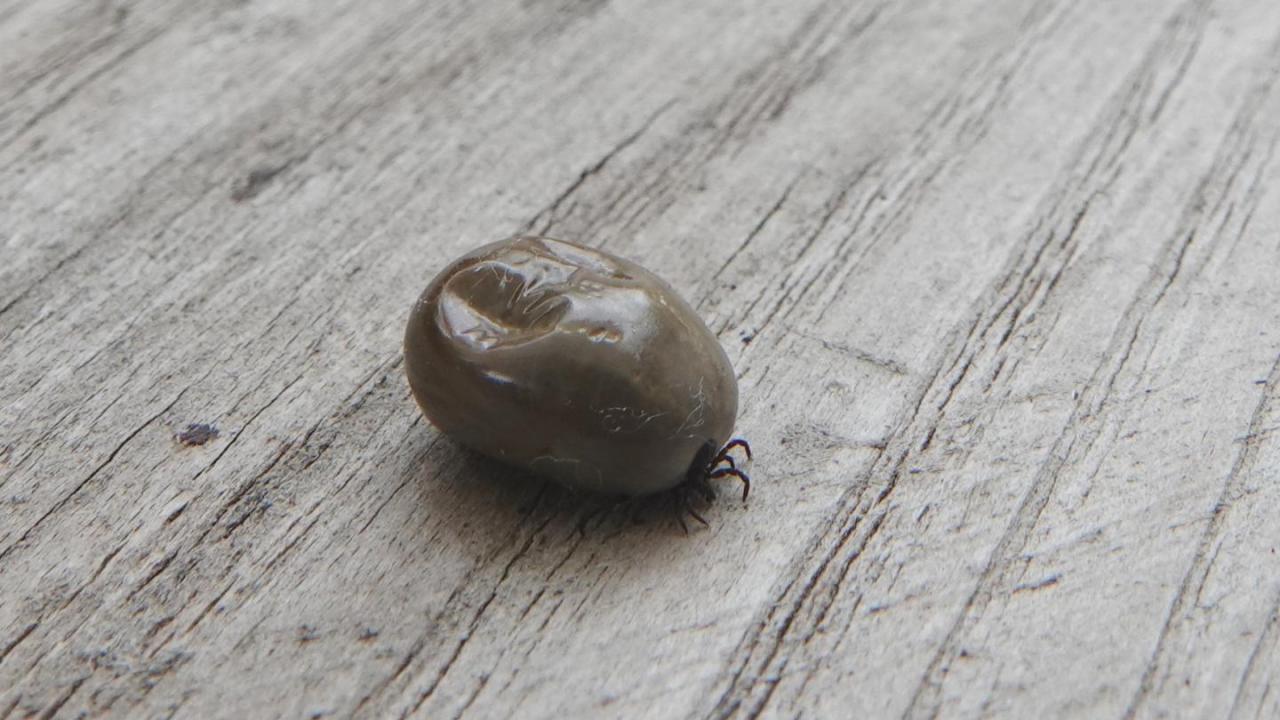Description:
Ticks are small arachnids.
Like spiders they have eight legs.
Ticks vary in colour and in size, depending on the type of tick, whether it is male or female, and whether it is a baby (larva), juvenile (nymph) or an adult.
The tick's colour and size also depends on whether it has fed or not.
Ticks are very small, comparable in size to the head of a pin.
Ticks also bite and transmit disease in their larval and nymph stages.
In these early stages they will be even smaller and ressemble flecks of pepper or dirt.
Adult females are the largest in size, but when not engorged with blood they usually are no larger than a sesame seed.
There are thought to be around 900 separate species of ticks in th world.
The Castor Bean Tick or Sheep Tick (Ixodes ricinus), is the commonest tick in northern Europe.
It is found across Europe and into neighbouring parts of North Africa and the Middle East.
Preferred hosts are deer, foxes, sheep, cattle, dogs, cats and humans.
It may reach a length of 11 mm (size of a bean) when engorged with a blood meal.
Like other Ixodes species, the Castor Bean Tick has no eyes.
It is the primary transmitter of Lyme disease.
1st, 2nd & 3rd photo: It was attached to our cat! In my yard, Hilversum, The Netherlands, 10 May 2013
4th & 5th photo: In my yard, Hilversum, The Netherlands, 4 August 2023

